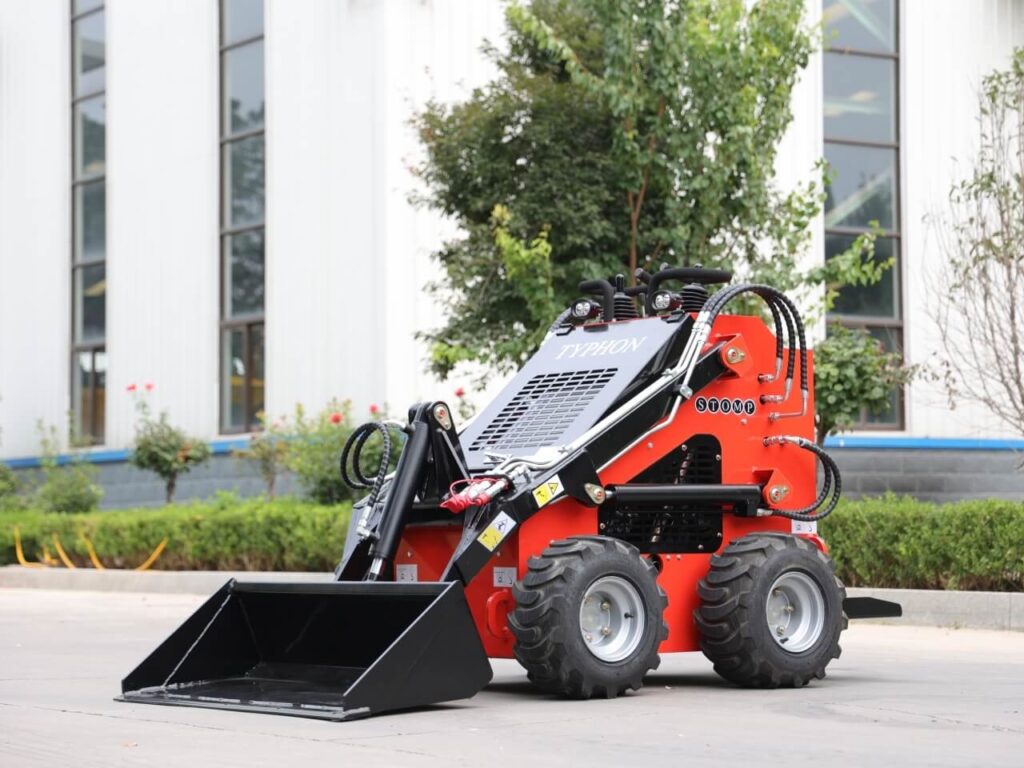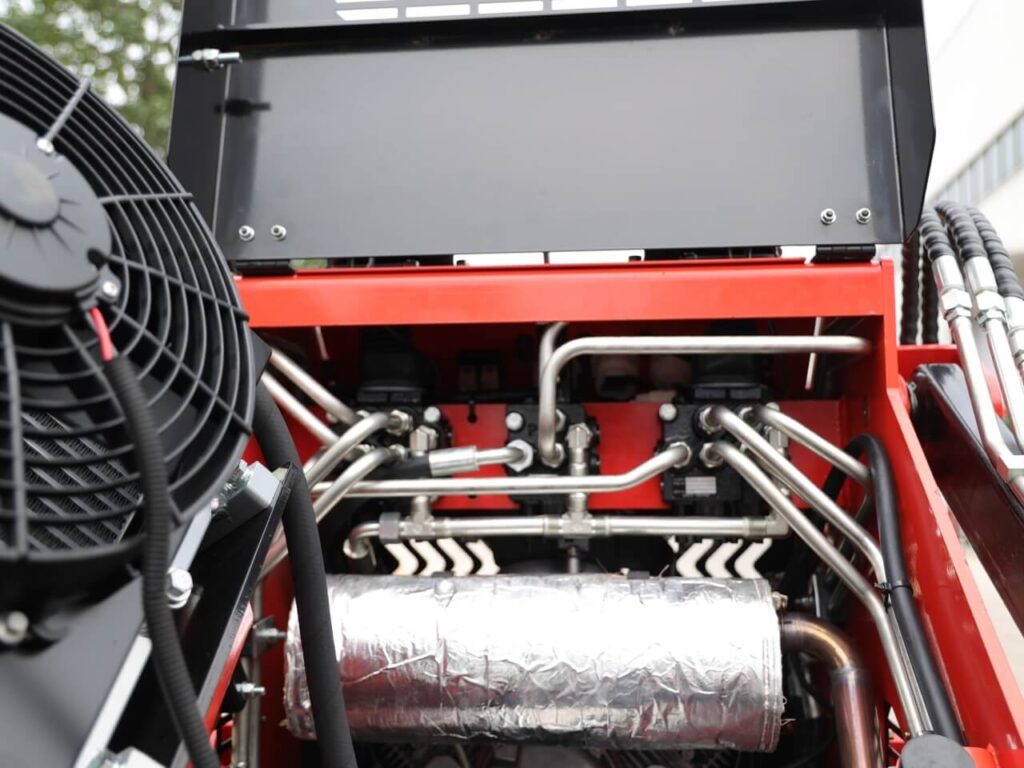Many construction projects rely on skid steers adaptability and efficiency. Job sites need these small devices for excavation and landscaping. However, understanding critical components like the case drain and typical faults is essential to keeping them working efficiently. This blog discusses case drains, their importance, skid steer issues, and solutions.
Importance of Maintenance
Regardless of how cautious and careful we are with our equipment, it will eventually wear down. Maintenance is an inherent aspect of the life cycle of any tool, particularly large equipment like skid steers. However, important elements can be kept in excellent shape for as long as feasible. This post will show us which parts are important and what to look for to keep your equipment in good functioning order. By concentrating on proactive maintenance measures, operators may extend the life of their skid steers and reduce downtime, thereby conserving their investment and assuring continuing productivity on the job site.
Understanding a Case Drain
What is a Case Drain?
A case drain is an integral part of a skid steer’s hydraulic system. It lets surplus hydraulic fluid escape from hydraulic motors and pump casings, reducing pressure buildup. This ensures that the internal elements of the motor or pump are properly lubricated and cooled, which is critical for their lifetime and performance.
Importance of a Case Drain
The case drain’s importance in ensuring appropriate hydraulic performance cannot be emphasized. It regulates the temperature and pressure of the hydraulic fluid, ensuring that the system functions smoothly. Without a working case drain, you risk destroying vital components due to overheating and high pressure, resulting in expensive repairs and downtime.
Most Common Skid Steer Issues
Top Skid Steer Problems
Even with proper maintenance, skid steers can develop a variety of difficulties. Hydraulic leakage, engine difficulty, and electrical failures are among the most typical issues. However, case drain troubles are among the most pressing concerns since they directly damage the machine’s hydraulic system.

Reasons for Case Drain Problems
Contamination, leakage, and worn-out components are common causes of case drain difficulties. Dirt and debris can contaminate hydraulic fluid, resulting in blockages and wear. Leaks in the hydraulic system can cause inadequate lubrication, and worn parts can fail to maintain the required pressure levels.
Issues Within Key Areas
To begin, we’ll look at the most typical concerns that skid steer owners face. These concerns are related to three important areas: the skid steer engine, hydraulic system, and control system.
Engine Problems
Operators frequently discover engine difficulties when starting becomes difficult. Begin by inspecting the gasoline system and testing all components, such as fuel filters, fuel lines, and the tank.
Infrequent filter replacements are a typical source of engine difficulties in diesel skid steers, particularly in dusty environments when more frequent maintenance is required.
Fuel tank problems might result from insufficient fuel delivery to the injectors, reducing engine performance. If you suspect a fuel tank issue, start by checking for blocked fuel injectors.

In skid steers, glow plugs heat the engine’s combustion chambers in cold weather. If they fail, the engine will not run properly. Ensure that the glow plugs are properly attached on both sides of the engine.
Additionally, the throttle wire must be tightly attached to the throttle body. Loose cables can cause faulty engine functioning, so examine both ends of the cable where it connects to the throttle body, which is usually positioned at the front top of the motor.
Hydraulic System Challenges
The hydraulic system is one of the most important parts of your skid steer, but it may also be the most difficult. If you observe any indicators of poor operation, first check the hydraulic fluid level. Since the manufacturer’s recommended amount is the one that works best for the system, make sure it is neither under- nor overfilled.
A blocked fuel filter is often the source of performance concerns, particularly a lack of power, because it inhibits fluid flow and limits the skid steer’s potential.
It is also necessary to examine the pump. In belt-driven versions, defective pumps can cause loose belts, resulting in wear and poor hydraulic efficiency.
Don’t forget to inspect the hydraulic lines for looseness and leakage. Run the pump and engine to perform a thorough check; the high pressure will aid in the rapid identification of leaks. Working under high pressure creates an injury risk, therefore always emphasize safety by using suitable PPE, such as safety goggles and gloves.
Finally, inspect all fittings, seals, and valves. Broken seals, loose connections, and poorly opened valves can have a substantial impact on the hydraulic system’s performance.
Control System Errors
Control system faults can have a substantial impact on a skid steer’s operability. Sometimes the problem is closer than operators think, especially within the cabin. A lack of reaction to joystick commands can be frustrating, and it may indicate weak or disconnected steering connections. Simply tightening or reconnecting these can usually remedy the problem.
Verify the wire connections between the actuators, hydraulic pump, and joystick. If everything looks to be connected and functional, you may need to replace the joystick control circuit board.
It’s also a good idea to check the skid steer’s safety switches, particularly if the controls respond slowly. Make sure the switches are firmly linked, and don’t forget to check for any battery depletion within the skid steer.
Impact of Case Drain Issues
Performance and Safety Concerns
A malfunctioning case drain can have a significant influence on skid steer performance. The machine may operate inefficiently, with slow motions and low power. Furthermore, hydraulic problems might pose safety hazards since the operator may struggle to handle the device adequately.
Costly Damages
Ignoring case drain issues might result in more severe damage over time. Hydraulic components may wear out faster, requiring costly repairs or replacements. Furthermore, extended contact with high pressure can damage seals and other components, exacerbating the problem and raising expenses.
Preventing and Resolving Case Drain Problems
Preventive Measures
To avoid case drain troubles, maintain the hydraulic system clean and clear of pollutants. Inspect and replace hydraulic filters on a regular basis, and make sure the hydraulic fluid is high-quality and well sealed. Check the hydraulic lines for evidence of wear or leakage.
Troubleshooting Tips
If you have a case drain problem, begin by checking the hydraulic fluid levels and quality. Next, check the case drain line for clogs or leaks. If the problem persists, go to the skid steer handbook or call a professional technician for more assistance. Addressing these issues as soon as possible will save your system from additional harm and maintain it in good working order.
Understanding the Importance of a Case Drain Line
A case drain line, sometimes known as a “third line,” is a critical component in a piston-type hydraulic engine. Its principal duty is to drain any oil that has seeped past the primary seal. This method prevents pressure from building up on the outer seal, and the recovered oil is returned to the tank, preserving system efficiency.
A case drain line is required because, without it, the skid steer risks a complete system failure owing to a shaft seal blowout. Proper installation is critical for the hydraulic line’s best performance and to avoid permanent damage. A case drain line also includes a case drain filter. This filter is critical to system protection because it prevents impurities from entering the tank from the hydraulic motor, keeps the hydraulic fluid clean, and extends the life of the system’s components.
Clogged Case Drain Filters
The case drain filter must be replaced on a regular basis to ensure that your computer functions properly. Otherwise, the hydraulic fluid will not flow through, resulting in pressure buildup, even in a low-pressure line. High pressure naturally seeks an escape route, frequently exploiting the system’s weakest spots, which are usually the seals. As these seals fail, the vital components wear faster owing to inadequate lubrication and increasing pollution. Systems without proper case drains are more subject to failures caused by shaft seal leakage.
Persistent pressure has a major influence on motor component displacement. For example, in an axial piston final drive motor, pressure-induced stress can cause the shoes to detach or become irreversibly damaged. Similarly, the pistons of a radial piston motor can become displaced from the cam, resulting in serious alignment difficulties or complete loss of contact.
Extreme circumstances may result in catastrophic results, such as the motor’s cover plate separating and ejecting at high speeds, posing substantial safety hazards and perhaps causing full loss of machine control. As a result, replacing case drain filters on a regular and timely basis is critical for keeping your skid steer running smoothly and avoiding costly, substantial damage.
When to Replace the Case Drain Filter
The case drain filter is critical in keeping hydraulic fluid clean, increasing the life of system components. Operational pressure and internal component tolerances in the hydraulic system are two factors that affect the need to replace the filter. A clogged case drain filter can significantly increase the motor’s hydraulic pressure, eventually generating mechanical and hydraulic difficulties that may result in total system failure. The look of the filter is clear evidence that it should be replaced; if the filter seems black and dusty rather than clean and brown, it is past time to change it.
If you detect a clog in the case drain, disassemble it and examine the remaining filters in the hydraulic system to verify they fulfill the cleanliness standards. It is crucial to remember that cleaning the filter or the case drain is not suggested since it frequently causes more blockage and may result in accelerated damage to your final drive. While changing the case drain and filter is a reasonably affordable process, failing to do so and having to replace the complete final drive might result in much higher costs.
Importance of Regular Maintenance
Role of Maintenance
Regular maintenance is essential for avoiding case drain difficulties and other typical skid steer problems. A regular maintenance routine allows you to detect and handle possible issues before they worsen. This proactive strategy not only extends the life of your skid steer, but also assures its peak performance.
Maintenance Best Practices
Create a maintenance schedule that includes checking hydraulic fluid levels, cleaning filters, and evaluating hydraulic lines for leaks or damage. Additionally, keep the equipment clean and debris-free, and perform routine engine and electrical system maintenance. Following these recommended practices will help you prevent expensive repairs and downtime.
Work with Experts to Keep Your Skid Steer Running
Case drain maintenance is an important aspect of extending the life of your equipment. However, it is frequently missed. If your machine’s case drain or any other component needs to be replaced, explore our shop to discover the appropriate item. Our vast inventory ensures that you have access to high-quality components that satisfy your machine’s specifications.
If you have any queries about the status of your drain case filter or are experiencing issues with your skid steer, please contact us right away. We are more than just a provider; we are skid steer specialists. Our team of skilled specialists is ready to provide guidance, diagnostics, and solutions that are suited to your individual requirements. Using our experience may help you maintain your equipment’s performance and reduce any downtime, ensuring that your operations run smoothly and efficiently.
Conclusion
Addressing case drain difficulties and other frequent skid steer problems is critical for ensuring your equipment’s performance and lifetime. Understanding the importance of case drain, detecting frequent faults, and applying preventative actions will help you keep your skid steer functioning smoothly. Stay knowledgeable and proactive in your maintenance efforts to guarantee that your machine stays a dependable asset on the jobsite.
Check out our other resources and guides for more information on skid steer maintenance and issue resolution. With our experienced advice, you can keep your equipment in good working order and extend its life.

Its like you read my mind! You seem to know so much about this, like you wrote the book in it or something. I think that you can do with a few pics to drive the message home a bit, but other than that, this is fantastic blog. A fantastic read. I will certainly be back.
https://t.me/s/iGaming_live/4864
https://t.me/officials_pokerdom/3088